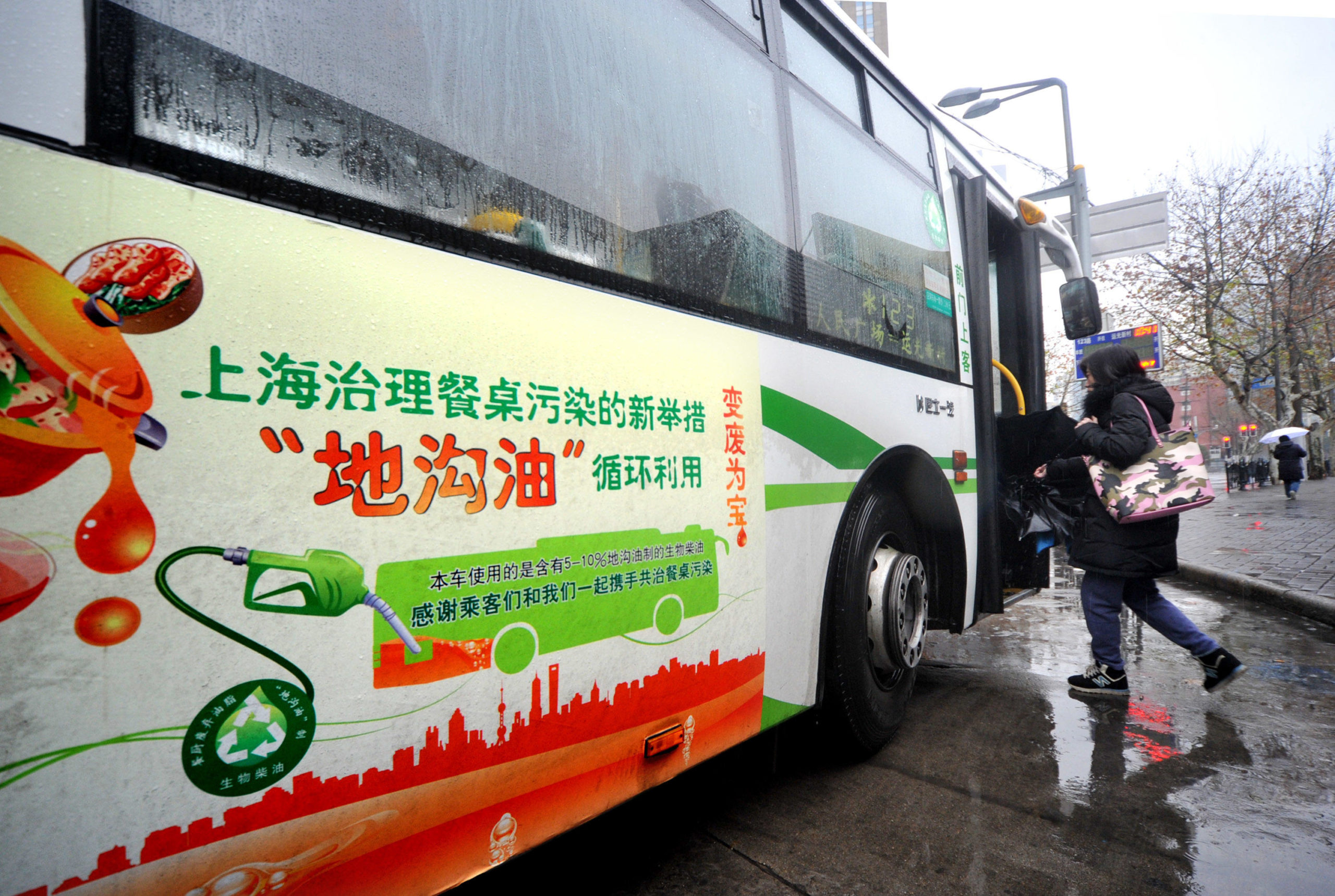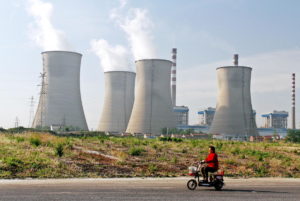Prices for China’s biodiesel exports have been rising significantly, from less than 7,000 yuan (US$1,050) a tonne in January last year to a record high of over 12,000 yuan (US$1,723) in July this year. The average price in the first seven months of this year also exceeded 11,000 yuan. Biodiesel stocks have also done well on China’s own markets.
The main reasons for this are the global trend towards low-carbon development and the Russo–Ukrainian war pushing oil prices higher. Yet biodiesel has long been linked with cutting carbon and with energy security. Malaysia started researching palm-based biodiesel in the 1980s to reduce reliance on imported crude oil. Today, the country mandates that fuel for its transport sector must have a 15% biodiesel component. This is set to increase to 20% at the end of the year. Indonesia, meanwhile, is already at 30%, far more than any other country.
Countries worldwide are taking different approaches to biodiesel, depending on their motivations and available resources. Brazil and the US produce it from soy because they grow so much. In the EU, the main feedstock is locally grown rapeseed. In order to meet targets on transport emissions, the bloc also imports palm oil, soybean oil and used cooking oil as feedstocks, as well as biodiesel that has already been made from those oils. The EU is currently the world’s biggest importer and user of biodiesel.
Globally, most biodiesel is made directly from plant oils. However, that can be a food security issue, taking up land that could be used for food crops. At the same time, land use changes (such as deforestation) to produce biodiesel feedstocks have become a key source of greenhouse gas emissions. In response, the EU is limiting the use of biodiesel produced directly from plant oils.
China uses huge amounts of both petroleum oil products and edible oils, and is reliant on imports for both. So, early on it made clear that the biodiesel industry would “not compete with humans for food”. If the industry wanted food oils to make biodiesel from, it had to wait for a kitchen to use them first.
In China, used cooking oil is often called “gutter oil”. From the late 1990s onwards, China saw a number of scandals where such oil was crudely recycled and returned to diners’ tables. In 2010, the State Council ordered better management of used cooking oil and for routes to commercial resource recovery to be explored. In 2017, the General Office of the State Council identified the management of used cooking oil as a key part of food safety work for the 13th Five Year Plan (FYP) period (2016–2020). Firms making use of the resource were to be encouraged to expand operations, with tax breaks where appropriate to support research into technology and roll-out of systems for utilisation.
In 2002, China’s first 200,000-tonne biodiesel plant was included in national innovation plans, marking the start of its biodiesel sector. But in the 20 years since, no domestic market for biodiesel has appeared. Efforts by some local governments and companies to break into the vehicle fuel market have largely failed, and most of the biodiesel produced in China is exported to the EU. According to industry insiders, there is little interest in biodiesel at home. But with carbon neutrality targets and the future importance of bioenergy being emphasised over and over, could there be new opportunities for biodiesel as a replacement for fossil fuels?
Overseas success
Industrial policy documents have been full of positive words about biodiesel. The plan for bioenergy during the 13th FYP called for a system of biodiesel standards and speeding up use of the fuel in transportation. There was to be a 70% reduction in consumer taxes for biodiesel that met standards, as well as an instant rebate on value-added taxes. China has had standards for B5 and B100 fuel (diesel with 5% and with 100% biodiesel added) for over a decade. But there is still no large-scale use of biodiesel in China’s fuel sector.
Put simply, the high costs of transportation and processing mean that biodiesel made from used cooking oil costs more than standard diesel. If the government does not subsidise it, there is no incentive for fuel makers to buy it. That’s why apart from some limited applications as a fuel or feedstock in industry, most of China’s biodiesel is exported to the EU.
The exception is Shanghai. Since 2013, the city has been experimenting with using biodiesel in public buses and street-cleaning vehicles. By the end of 2020, B5 biodiesel was available in all of the city’s 243 filling stations.
To deal with the sector’s two bottlenecks – insecure supplies of used cooking oil and a lack of buyers – the municipal government had, in 2018, put in place a range of helpful measures, including a city-wide network to collect and process the raw material needed, and making biodiesel available in filling stations. Also, cash from the city’s climate change budget was used to subsidise firms producing and selling B5 biodiesel. In 2021, the city extended those subsidies for a further two years.
As no other Chinese city or province has similar measures, the EU market has, in effect, stepped in and supported the Chinese biodiesel sector. In April 2009, the EU’s Renewable Energy Directive (RED) set binding targets for biofuel use, including a requirement for biofuels to make up 10% of fuel use in road and rail transportation by 2020. Biofuels made from waste, non-food fibres and wood fibres were given special treatment – one litre would count as two. That boosted prices by making biodiesel from used cooking oil a better choice for fuel retailers than biodiesel made directly from plant oils.
In December 2018, a revised directive, RED 2, came into effect. The target for the percentage of biofuel in fuel for road and rail transportation in 2030 was raised to 14%, and limits were placed on the amount of that biofuel that could come directly from food and feed crops. Also, the use of palm oil in biofuels is to be phased out by 2030. That means even higher demand from the EU for non-food-source biofuels.
However, a cap for the use of biodiesel from used cooking oil in transportation fuel was set, at 1.7%. The EU’s local supply of used cooking oil is inadequate, and the limit is designed to stop new oil being fraudulently passed off as used. It should also encourage the development of technology for other, as-yet not mature, “advanced biofuels”. Feedstocks for those fuels – including industrial biomass waste not suitable for use as food or animal feed; straw; and crude glycerine – are listed in RED2 Annex IX-a.
But the EU is still unable to import enough used cooking oil even to reach the 1.7% cap. According to research by the consultancy CE Delft, that figure would mean the EU burning 6.1 to 6.4 million tonnes of biodiesel from used cooking oil every year by 2030. As it is, in 2019 the EU (including the UK) used only 2.8 million tonnes, of which half was imported. Those imports came from China (34%), the US (12%), Malaysia (12%), Indonesia (7%), Saudi Arabia (6%) and Russia (4%).
If those countries start using more biodiesel at home to meet their own climate commitments, what will fuel the EU’s ambitions? In late April, when Indonesia announced a ban on the export of palm oil, a ban on exports of used cooking oil was also put in place. That only lasted three weeks, but the warning signs are clear.
Indonesia currently has a tougher biodiesel mandate than anywhere else, but its biodiesel is made directly from palm oil; it is not yet making full use of used cooking oil. In the long term, encouraging the employment of cooking oil will be of benefit for Indonesia’s food and energy security. Sensing this, prior to banning the export of palm oil, Indonesia had also tried to restrict exports of used cooking oil.
A domestic future
Will China too come to encourage the domestic use of used cooking oil? Government documents have started to talk more positively and specifically about biodiesel since China announced its dual carbon targets, of peaking carbon emissions before 2030 and reaching net zero before 2060.
In February, for example, the National Development and Reform Commission (NDCR) and the National Energy Administration published policy guidelines on the green and low-carbon transition in the energy sector, offering “support for clean fuels such as bioethanol, biodiesel and biogas entering the oil and gas network.” In May, the NDRC and the Ministry of Housing and Urban–Rural Development published plans for urban waste sorting and processing, calling for expansion of the use of kitchen waste and where suitable using it for making biodiesel and other products. That same month, the NDRC published plans for the “bioeconomy” during the 14th Five Year Plan period (2021–2025), saying biodiesel trial projects would run where suitable, as well as pilots for using biofuel in aviation.
But the availability of feedstocks is hampering China’s biodiesel industry. Liu Jianguo, a professor at Tsinghua University’s School of Environment and head of its Solid Waste Control and Resource Recovery Institute, told China Dialogue that industry insiders differentiate between waste from restaurant and household kitchens. He explained that to make resource recovery from household kitchens feasible would require oil recovery points to be positioned in every apartment complex. Even if that were done, there would not be enough to make the trip to the recycling plant worthwhile. So, used cooking oil has to come from restaurant kitchens and food-processing plants.
Industry estimates of how much used cooking oil China produces all come out at more than 10 million tonnes annually. Currently, around 1 million tonnes are used to produce biodiesel. But if more biodiesel was produced using that used cooking oil, where would it go? There could be a particular role in carbon-neutral transportation.
Research institutions around the world are in broad agreement about a roadmap to carbon-neutral transportation – zero-carbon power must in time come from electricity and hydrogen. And that means the internal combustion engine will have to get off the road. So if there are no engines to burn it, what need is there for biodiesel? Situations where electricity or hydrogen is not practical, such as aviation and shipping, could be one possibility.
A report from the Energy Transitions Commission and the Rocky Mountain Institute predicts that land transport in China will be entirely electric by 2050, with hydrogen fuel cells used only for heavy duty road transport. Long-distance aviation and shipping, meanwhile, will rely on biofuels, synthetic fuels, hydrogen or ammonia. The report also points out that it will be difficult to use biofuels to decarbonise aviation, as it will be more expensive, and in short supply.
Gong Huiming, senior program director at the Energy Foundation China’s Transportation Program, explained: “After all, we’re not talking about millions or even tens of millions of tonnes of fuel, but hundreds of millions.”
He thinks biodiesel has a limited role to play in decarbonising transport. Instead, he suggests transport should look to synthetic fuels. He told China Dialogue: “There are a range of technologies for zero-carbon aviation under development. It is not yet clear which will be best.” He added that large-scale and cheap supplies of hydrogen, if developed, would allow for the synthesis of ammonia and methanol at lower prices. Although synthetic fuels and biofuels are currently both more expensive than the traditional fossil fuels, synthetic fuels are at least less restricted in terms of scale than biofuels. And as scale increases, unit costs will fall.
He also points out that new technology isn’t the only solution to the “last mile” of carbon neutrality – carbon markets could also work. Each technology or market approach has different pros and cons under different scenarios. It is not yet possible to say what the winner will be when it comes to carbon-neutral transport. He adds there are also potential industrial applications where biodiesel could replace fossil fuel diesel. The transportation sector may simply not need biodiesel. But organic growth in the biodiesel sector will depend on the green premium falling to the point a market appears.
Meanwhile, biodiesel insiders says biodiesel from used cooking oil could play a huge role during the transition to electric transport. If B5 biodiesel was adopted nationwide, rather than only in Shanghai, there would be demand for between 7 and 8 million tonnes of biodiesel (calculated according to 2021’s apparent consumption of diesel, which is domestic production + net imports, of 147 million tonnes). That is far more than the 1 million tonnes produced annually at the moment.










